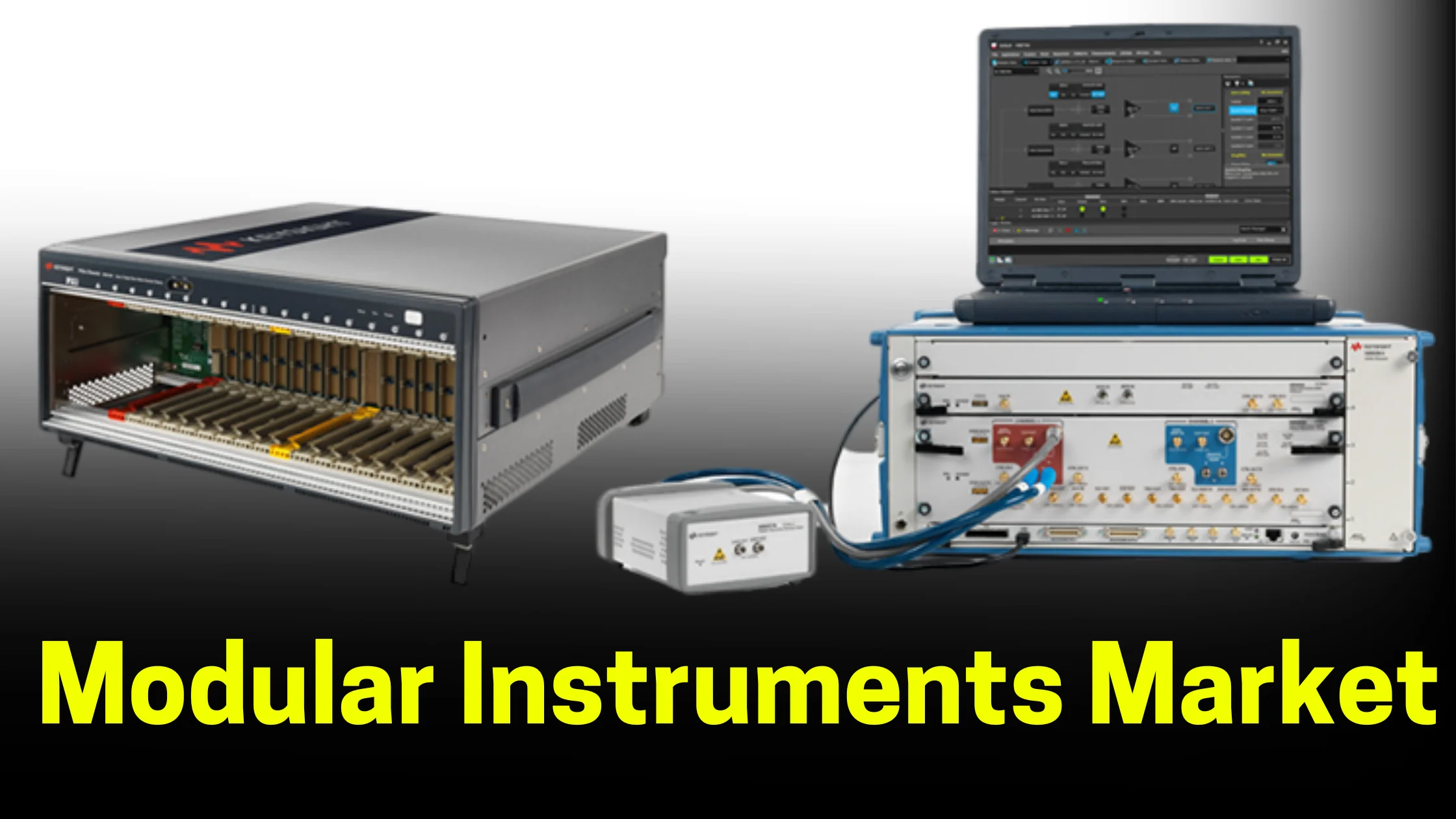Over the course of the forecast period (2021–2030), a CAGR of 6.8% is anticipated in the modular instruments market. An electronic device known as a modular instrument is one that assembles different kinds of functional cards to support a variety of input/output channels or modify its measurement capabilities based on the needs of the particular application. Faceless instruments are those that often use a computer user interface in place of inbuilt displays and controls. Additionally, it comes with drivers—programmatic software interfaces. Various mechanical and electronic goods are developed, designed, maintained, verified, and repaired with the use of this equipment. Modular instruments are used in photonics production, submicron and nano-precision technologies, mechanical and electrical engineering, and other fields because they are small, adaptable, quick, affordable, and come in a range of sizes.
The market for modular instruments is anticipated to develop as a result of the growing uptake of the Internet of Things, automotive, 5G, virtual reality, and artificial intelligence (AI) in the semiconductor and electrical sectors. There is a considerable global need for data centres due to the rapid use of cloud computing in nearly every industry, which has increased reliance on IT services.
The number of connected devices has increased as a result of the continued rollout of LTE and technological developments in wireless connectivity, including Wi-Fi, GPRS, and WiMax (global interoperability for microwave access). Thus, automated test and measurement (T&M) configuration in North America is made possible by the proliferation of modular equipment.
Modular Instruments Market based on Platform:
• PXI
• AXIe
• VXI
Modular Instruments Market based on End Use:
• Telecommunications
• Aerospace & Defense
• Automotive & Transportation
• Electronics & Semiconductor
Modular Instruments Market based on Geography:
• North America
o US
o Canada
• Europe
o Germany
o UK
o France
o Italy
o Spain
o Rest of Europe (RoE)
• Asia Pacific (APAC)
o China
o Japan
o India
o Australia
o South Korea
o Rest of Asia Pacific (RoAPAC)
• Latin America (LATAM)
o Brazil
o Argentina
o Rest of South America
• Middle East and Africa (MEA)
o UAE
o Turkey
o Saudi Arabia
o South Africa
o Rest of Middle East & Africa
A robust PC-based platform, high-speed peripherals, and test instruments are all combined into one modular instrumentation platform called PXI (PCI eXtensions for Instrumentation). It is an operating system that works with both Windows and Linux and is built on PC-style hardware. This platform offers a variety of integrated hardware, software, and configurable I/O combinations, providing high-performance solutions for test and measurement applications.
The industry-standard instrumentation platform VXI (VMEbus eXtensions for Instrumentation) combines complex measurements with potent computing. It is a system made to offer dependable, high-performing solutions for applications involving testing and measuring. This platform provides versatility, detachable modules, and many I/O configurations. It provides a number of solutions, including networking for data gathering, motion control, communication, signal processing, and analysis.
AXIe is a high-capacity platform for test, measurement, and monitoring systems of the future. An open, scalable, and adaptable interface for modules, instruments, and systems is offered by this platform. AXIe’s modular architecture makes it possible for users to swiftly and affordably develop unique solutions for their application requirements. It also provides excellent signal processing and analysis and supports a variety of I/O configurations.
For the aerospace and defence sectors to improve military operations and provide improved surveillance and monitoring capabilities, modular devices are crucial. These tools facilitate precise signal monitoring, data analysis and context provision, and real-time decision making. Additionally, they can be applied to simulation engines, navigation, and navigation systems.
Modular instruments find extensive application in the semiconductor and electronics sector. They allow precise and trustworthy measurements in microcircuit systems and are utilised to monitor and analyse signals across a broad frequency range. Their primary use is in the construction of consumer electronics, radio receivers, and cellular phones, among other communication systems. They also facilitate effective circuit testing, monitoring, and debugging.
Automotive engineers frequently utilise modular devices to examine and assess performance and safety-related vehicle data. These devices are employed in today’s modern engines to analyse and modify engine characteristics, verify vehicle parts, and assess the performance of drivetrain components. They can also be utilised to identify defects in electronic systems, analyse fuel use, and diagnose engine issues.
Medical experts use modular equipment extensively to diagnose and treat a wide range of illnesses and ailments. Medical personnel may swiftly and effectively analyse blood samples with these tools to look for a variety of illnesses and injuries. They make biological materials, such as DNA, tissue samples, and cells, easier to analyse and diagnose.
Physical values like voltage, current, and power are measured and analysed using analogue modular instruments. These devices can transform analogue signals into digital form because they have analog-to-digital convertors. In addition to making signal control simple, these instruments’ integrated signal sources, analyzers, and oscillators also aid in lowering noise-induced mistakes. Digital modular instruments are intended for use in a variety of digital systems for signal processing, data measurement, monitoring, and communication. In addition to nonlinear data processing, these instruments provide signal processing capabilities that allow them to do noise reduction, filter creation, waveform production, signal analysis, signal acquisition, and signal conditioning. Digital signal analysis, real-time signal identification, waveform synthesis, and test automation are among the activities performed by these equipment.
• This report illustrates the most vital attributes of the Modular Instruments Market, which are driving and providing opportunities.
• This research gives an in-depth analysis of the Modular Instruments Market growth on the basis of several segments in the market.
• This report presents the predictions of the past and present trends of the Modular Instruments Market.
• This study also presents the competitive analysis, such as key strategies and capabilities of major players of the Modular Instruments Market.

